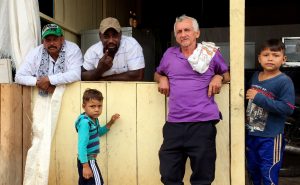
Charras, Colombia, Jun 2 (EFE).- The peace agreement between the government of Colombia and leftist rebels that ended a more than 50-year-old armed conflict has brought hope to this remote southeastern hamlet of a new era of farming involving products other than coca, the raw material of cocaine.
Charras, located in Guaviare province, was virtually unknown to most Colombians until its location at the end of a dirt road was chosen as one of 26 designated areas for the Revolutionary Armed Forces of Colombia (FARC) guerrillas to leave aside their weapons and demobilize.
“For us, our expectation is to do away with the coca thing once and for all,” local leader Carlos Coy told EFE.
Charras is located 106 kilometers (66 miles) east of the provincial capital, San Jose del Guaviare, and nobody knows for sure how many people live there, although some residents estimate there are around 60 families in the wood huts along the single road.

For decades, the FARC had a stronghold on Charras.
In the 1990s, coca production boomed in the area and the plant became a type of currency in a barter system in which all prices were set in grams of coca paste. Aerial spraying with herbicides by government agencies greatly reduced the plantations but did not eliminate them entirely.
The short-lived coca-based prosperity and the violence surrounding that business have convinced locals of the benefits of legal activities.
They say they expect little from the government in making that transition: a good road that allows them to get their produce to market, teachers for the school and health care staff for the clinic.
“We have crops like cacao, passion fruit, yucca … but we need support from the national government to market them,” Coy said. “As farmers, we’re ready to plant and harvest because this land is suitable for growing anything.”
